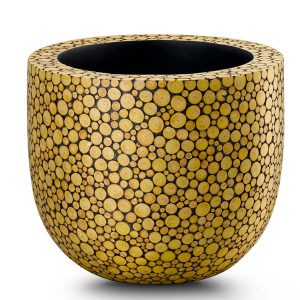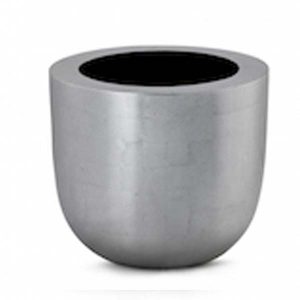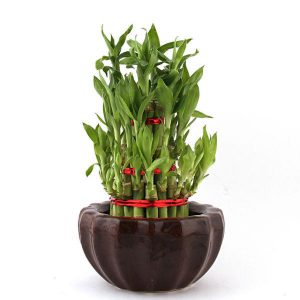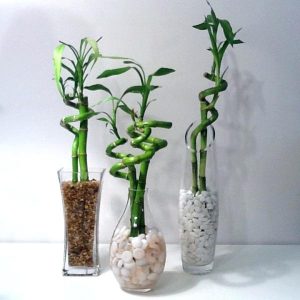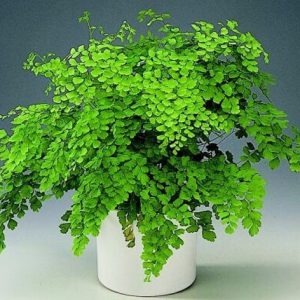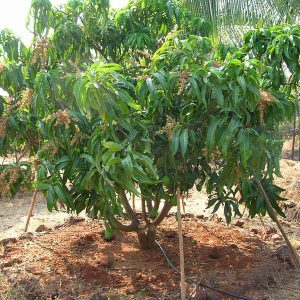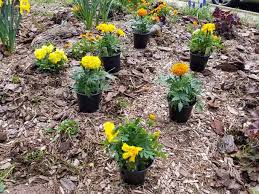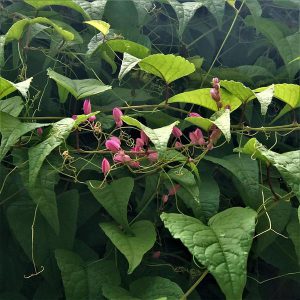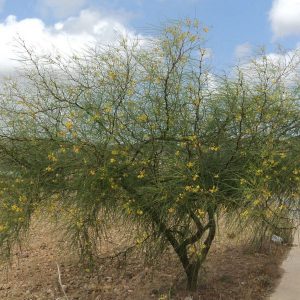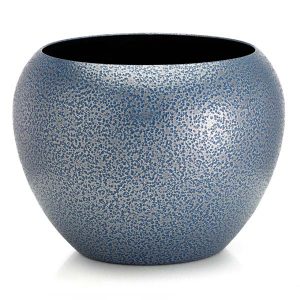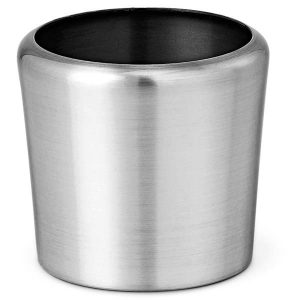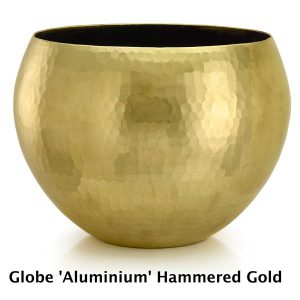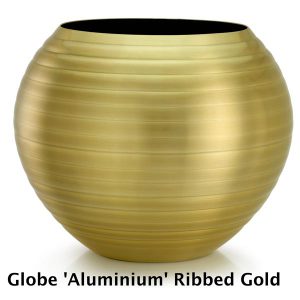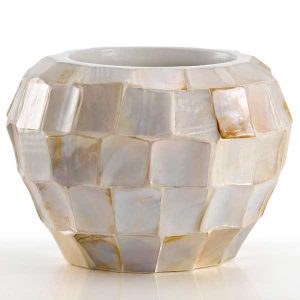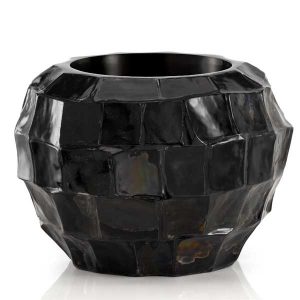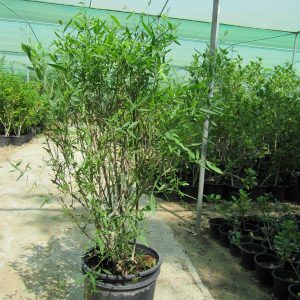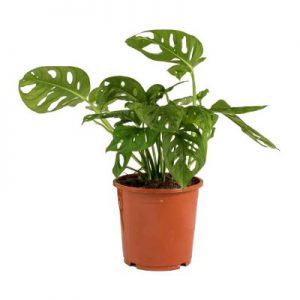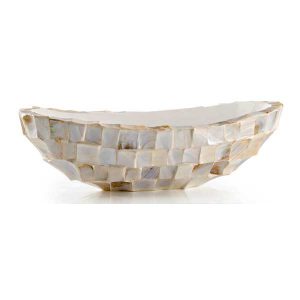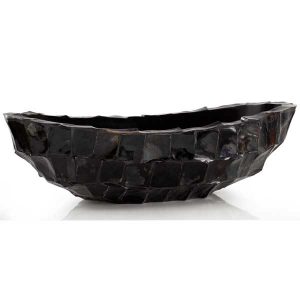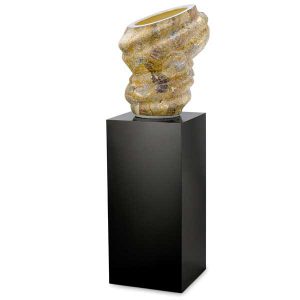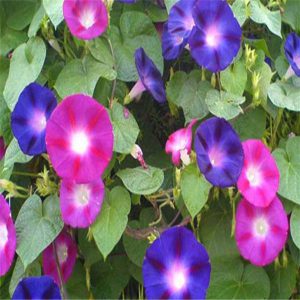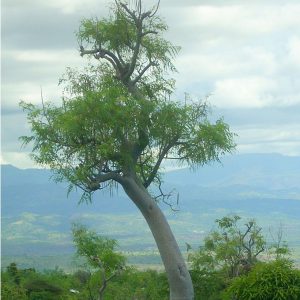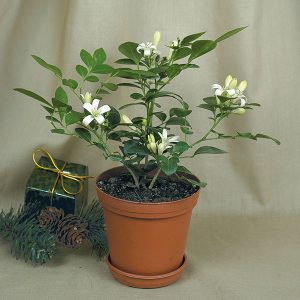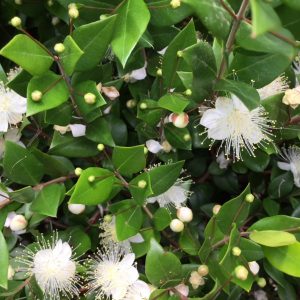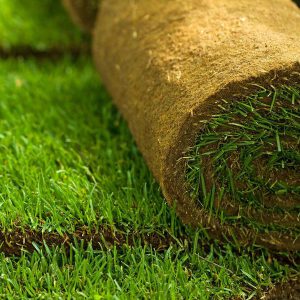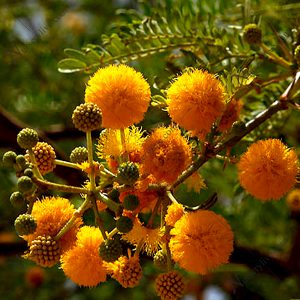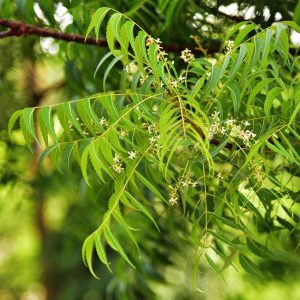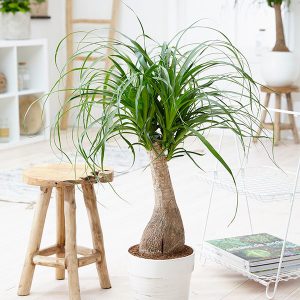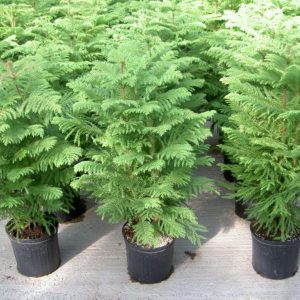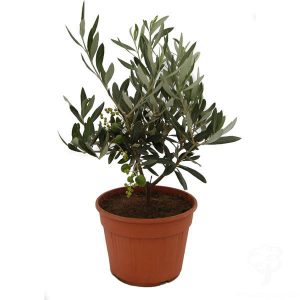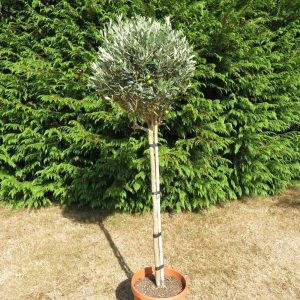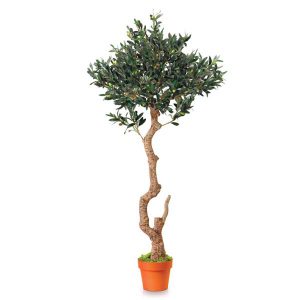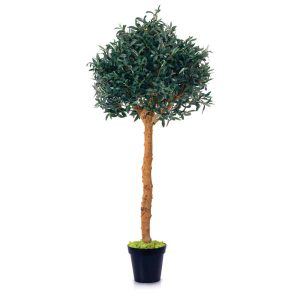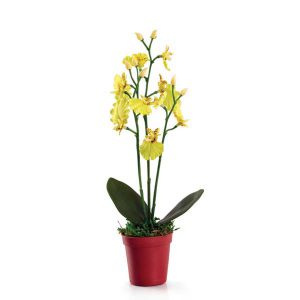Shop
Lucky Bamboo (Dracaena Bravni)
The lucky bamboo grown in it’s native country (West Africa) can grow up to 5ft tall (or much more), and as a house plant up to approximately 2 or 3 feet. There are various cultivars of this plant and some of the most interesting are the twisted stalk types which are trained by specialist growers.
The name lucky seems to have been given by the Chinese that practice feng shui and believe in this plant brings good fortune into a home or workplace.
AED 59.00Add to cart
Lucky Bamboo stick
1- LIGHT: Lucky Bamboo does great in bright light. It’ll tolerate lower light levels just fine but it won’t grow much. Be sure to avoid putting it in direct, hot sun as it’ll burn baby burn. You may need to rotate your plant so it gets light evenly on all sides. Right now mine sits in a north window sill but I’ll need to move it as the weather heats up because the glass gets hot here in the Arizona desert when those summer days roll around.
2- WATER: There is a bit of mixed opinion regarding this. Some people never change water, some change it frequently & others every now & then. I fall into the every now & then category as I change the water about every 2 months. I make sure the water completely cover the roots in both of my arrangements so I add a bit of water as needed, every 2-7 days depending on the temps. If the water is smelling bad, then change it!
AED 80.00Add to cart
Maidenhair fern fragrance
If you’ve ever grown (or killed) a maidenhair fern, you’ll know that these delicate, lacy beauties are quite picky when it comes to their growing conditions. We’ve featured plenty of tough-as-nails plants (spider plants, Chinese evergreens, cast-iron plants, and dracaena) that can tolerate a wide range of conditions, but maidenhair ferns are the opposite. As long as you know that there’s no fooling around when it comes to meeting its needs, though, this fern will reward you with gorgeous foliage. Here is what you need to know to keep a maidenhair fern thriving.
Mango
The juicy, ripe mango fruit has a rich, tropical aroma and flavor that summons thoughts of sunny climates and sultry breezes. The home gardener in warmer zones can bring that taste out of the garden. However, how do you grow a mango tree? Mango tree planting is suitable in zones where temperatures do not usually dip below 40 F (4 C.). If you’re lucky enough to live in a tropical to sub-tropical climate, take these tips for mango tree care and enjoy the fruits of your labors in just a few years.
AED 110.00Add to cart
Marrigold
- Marigolds are a favorite, no-fuss annual that can bring the color of sunshine to your garden, as well as butterflies, bees, ladybugs, and other beneficial insects. Give them full sun and some well-draining soil and watch them bloom from late spring until fall.
- Marigold plants germinate quickly, within just a few days, and bloom in about 8 weeks. This quick sense of satisfaction makes them a great first-time gardening project for kids and garden newbies. Not to mention, marigolds are a great companion in your vegetable garden and can help protect your veggies from predators and pests.
- It is best to water marigolds at the base of the plant and not from overhead. The densely double flowerheads will tend to rot with excess moisture. Allow the soil to dry somewhat between waterings, but do water regularly in high heat or dry weather. Marigolds growing in containers should be watered daily as containers dry out quickly.
AED 25.00Add to cart
Mexican creeper (antigonon leptopus)
A. leptopus is native to Mexico. Outside its native range, this species is widely naturalized and cultivated as an ornamental in warm, tropical climates around the world, including Africa, India, Australia, North, Central and South America, West Indies, and numerous islands in the Pacific Ocean.
AED 70.00Add to cart
Mexican palo verde – parkinsonia aculeata
- This is one of the most widespread and well-known woody weeds in hot regions, and has become naturalized and shown weedy tendencies in all countries where it exists, whether native or introduced. It is disliked for its thorns, forming dense impenetra…
AED 150.00Add to cart
Miswak (salvadora persica)
Therapeutic Uses
- The root contains steam-distillable oil, which has 90% Benzyl isothiocyanate, a compound responsible for decreasing dental caries and used in the preparation of Meswak toothpaste.
- The chemical present in the plant can control gingivostomatitis, skin infection and conjunctiva.
- The root bark is tonic, stimulant, emmenagogue. The stem bark is good for gastropathy.
Source: Agro-techniques of selected medicinal plants
AED 20.00Add to cart
Monestera Deliciosa
Monstera plant care is relatively low maintenance. Theplant needs warm interior temperatures of at least 65 degrees Fahrenheit (18 C.) or warmer. Swiss cheese plantalso needs moderately moist soil and high humidity
AED 315.00Add to cart
Moringa glory (ipomoea)
- Moringa oleifera (Moringaceae) is a tree native to India, and cultivated in tropical areas of the world.
- It is considered the “miracle tree”, because all its parts (leaves, flowers, fruits, wood and seeds) are used mainly for their pharmacological and nutritional properties.
- The crushed seeds are known for their very high capacity to purify drinking water.
- The leaves of the tree are so nutrient dense they are an integral part of the WHO and FAO programs for feeding the poor in indigent countries.
- In Ayurveda the moringa tree and its parts are used to treat over 300 ailments.
AED 10.00Add to cart
Morning oloifera (moringa)
What could be easier than walking into your yard, and gathering healthy leaves from your own grown Moringa plants to put on the table. The Moringa plant is a fast-growing, drought resistant tree that can reach up to 3 meters in its first year.
The Moringa tree is very easy to grow. Simply plant seeds or cuttings in a sunny spot. The moringa tree is a plant that grows mainly in semiarid, subtropical areas.
AED 90.00Add to cart
Moss Ball ‘Real Feel’
Moss Ball ‘Real Feel’
We classify ‘filler plants’ as small plants typically used to cover the soil, either alone or in combination with ‘feature plants’.
These plants have been carefully selected once again, taking into account their ‘realistic’ appearance and feel. We have also ensured that different leaf textures, scale and colour (including degrees of green) are represented to give a wide and interesting choice. This selection would also play an important role in the development of green walls.
AED 30.00Add to cart
murraya pancucata
This lovely plant is a compact evergreen shrub with oval, shiny, deep green leaves that can get up to 2 3/4 inches long, extending from interesting, gnarled branches. At maturity, this plant will be 8 to 12 feet tall and wide, creating a large, round shrub.
Clusters of small, fragrant flowers bloom in spring, followed by bright reddish-orange berries in summer. The flowers are very fragrant and smell like orange blossoms and flowering will occur year-round. The fruit is 1/2 to 1 inch long and red. It is prized by birds.
AED 25.00Add to cart
myrtus communis
Myrtus communis is one of the most familiar and distinctive evergreen shrubs of wooded and scrub habitats in the Mediterranean region. The fragrant and aromatic, shiny green leaves, which are rich in volatile oils, contribute to the characteristic scents of these habitats. The plants produce abundant, solitary, white flowers during the long, hot Mediterranean summer. The fruits are blue-black, spherical, multi-seeded berries, which are bird dispersed; yellowish-white-fruited forms are also rarely found. Myrtus is the only European genus of the large tropical and subtropical family Myrtaceae, which includes other familiar plants such as a cloves, allspice and eucalyptus.
The range of Myrtus communis extends from Macaronesia through western Asia to Central Asia and northern India. In addition to Myrtus communis, the genus comprises at least one other species; Myrtus nivellei, is a species restricted to the mountains of the Sahara. Molecular data reveal distinct genetic differences between the eastern and western parts of the range of Myrtus communis which can be dated to events about 5-8 million years ago, followed by later colonisation of the Sahara.
AED 25.00Read more
natural grass carpet roll
Thorough watering encourages your lawn to develop deep root systems, which make the lawn hardier and more drought-resistant. Let the lawn dry out before re-watering; as a rule of thumb, the color should dull and footprints should stay compressed for more than a few seconds. When watering, put a cup in the sprinkler zone; it should get at least one inch (2.5cm) water. Most healthy lawns require only 1″ of water per week.
The best time for watering is early morning; less water will be lost to evaporation. Ideally, it’s better to water the first half-inch or so, then wait for an hour or two before watering the second half-inch.
AED 200.00Add to cart
Needle bush (acacia farnesiana)
Acacia farnesiana thrives in dry localities and it is drought hardy and fire resistant. It can be found at elevations between sea level and 1300 m. The species is reported to exhibit tolerance to drought, high pH, heat, low pH, salt, sand, and slope. It forms symbiotic relation with Rhizobium allowing it to grow in nitrogen poor soils. Thrives on poor, dry soils but favors deeper, moister, more fertile clayey soils.
Acacia farnesiana origin is in Mexico and Central America. This species was given its name since it was introduced to Europe in the 17th century to the Farnese Gardens, created in 1550 on the northern portion of Palatine Hill in Rome, Italy, by Cardinal Alessandro Farnese, and was the first private botanical gardens in Europe. Since then it spread and became naturalized in many of the world’s subtropical and tropical arid lands
AED 280.00Add to cart
Neem tree(azadirachta indica)
The neem tree (Azadirachta indica) has caught the attention of gardeners in recent years for the benefits of its oil, a safe and effective herbicide. However, that’s just the beginning of the story. This versatile plant, native to tropical India and Asia, is a valuable tree with many uses. Read on for neem tree information, including neem tree benefits and uses
AED 215.00Add to cart
Nephrolepis Exaltata Ariane
Nephrolepis exaltata, the sword fern, Boston fern, is a species of fern in the family Lomariopsidaceae, native to tropical regions throughout the world
AED 40.00Add to cart
Nolina Recurvata
Light
Beaucarnea grows slowly at the best of times and although the plant will do OK in a slightly shady spot, it does need bright light for success. If you can provide some sun you will see the plant converting this into lush new visible leaves, i.e. more light equals more growth.
Watering
At the base of the Ponytail Palm is a very thick swollen stem that has a woody appearance. This is actually a water storage organ, which is capable of supporting the plant in times of drought.
You should aim to water at least a few times a month (once a week in the height of Summer if possible) and when you do so, make sure it’s a thorough watering. The water reserves will support the plant if you forget to water it from time to time
Temperature
When it comes to temperature requirements unlike most house plants the Ponytail Palm is close to being hardy and will accept almost sub zero temperatures. Exposing your plant to such a low temperature however would surely be by accident and not a regular occurrence right? *wink*. Aim for no lower than 7°C / 45°F and although higher temperatures will be accepted, try to achieve 21°C / 70°F to provide good growing conditions.
AED 335.00Add to cart
norfolt island pine
In the spring, summer, and early fall, feed the Norfolk Island pine with a balanced fertilizer every two weeks. When the plant needs to be watered, add some liquid fertilizer to the water and feed the tree.
- A balanced fertilizer is one with equal parts nitrogen, phosphorous, and potassium.
- Norfolk Island pines do not need to be fed during dormant periods in late fall and winter.
- To know when the growing phase starts up again, look for light green growth on the tips of the branches in spring.
AED 200.00Read more
Olive dwarf
Olive trees can reach up to ten feet in containers, unless your ceilings are particularly high you’ll probably want to opt for a dwarf variety. Dwarf olive trees will grow as tall as six feet, although you can keep them shorter by pruning them
AED 230.00Add to cart
Olive tree (olea europea)
The olive tree is an ancient cultural and characteristic plant of the Mediterranean, which comes from a Mediterranean wild family, the Olea europaea var sylvestris. The farming of the tree goes back many millennia and probably took place in the Eastern Mediterranean. There are about 300 different olive varieties grown worldwide for the production of table olives and olive oil. These products represent a very important branch of industry in the Mediterranean countries, particularly Spain, Italy and Greece.
AED 300.00Add to cart
Olive Tree Crazy trunk ‘Real Feel’
Olive Tree Crazy trunk
The plants in this section are not ‘variety’ or ‘species’ related.
They are grouped due to their ability to ‘stand alone’ as a feature plant of distinction, whether as a foliage plant, bonsai (miniaturized tree) or topiary (shaped tree). Each has a distinctive profile, (shape), foliage colour or texture.
AED 1,100.00Add to cart
Olive Tree Stem & Crown ‘Real Feel’
Olive Tree Stem & Crown
The plants in this section are not ‘variety’ or ‘species’ related.
They are grouped due to their ability to ‘stand alone’ as a feature plant of distinction, whether as a foliage plant, bonsai (miniaturized tree) or topiary (shaped tree). Each has a distinctive profile, (shape), foliage colour or texture.
AED 1,200.00Add to cart
Oncidium Mini Yellow ‘Real Feel’
Oncidium Mini Yellow ‘Real Feel’
The flowering plants (angiosperms), are the most diverse group of land plants. The first flowering plants known to exist are from 160 million years ago. They diversified enormously during the Lower Cretaceous and became widespread around 120 million years ago. It is generally assumed that the function of flowers, from the start, was to involve animals in their reproduction processes.
By so doing plants greatly improved their reproductive efficiency and genetic diversity. Many animals contribute, insects, birds, bats monkey’s etc. interestingly red flowers will be pollinated by animals that can see ‘red’ in the spectrum, (like birds and monkeys). Rarely will they be pollinated by insects which can see ultraviolet, but not red.
AED 25.00Add to cart
Onion Grass Brown ‘Real Feel’
Onion Grass Brown ‘Real Feel’
Graminoids (grasses) are the dominant vegetation in many habitats, including grassland, salt-marsh, reed swamp and steppes. They also occur as a smaller part of the vegetation in almost every other terrestrial habitat. Bamboos are a group of woody perennial evergreen plants in the true grass family Poaceae. There are 91 genera and about 1,000 species of bamboo alone! The diversity and importance of the grasses, which also includes rice, maize wheat, oats and barley (a basic food source) is staggering.Onion Grass Green
AED 160.00Add to cart
Onion Grass Green ‘Real Feel’
Onion Grass Green
Graminoids (grasses) are the dominant vegetation in many habitats, including grassland, salt-marsh, reed swamp and steppes. They also occur as a smaller part of the vegetation in almost every other terrestrial habitat. Bamboos are a group of woody perennial evergreen plants in the true grass family Poaceae. There are 91 genera and about 1,000 species of bamboo alone! The diversity and importance of the grasses, which also includes rice, maize wheat, oats and barley (a basic food source) is staggering.
AED 160.00Add to cart

